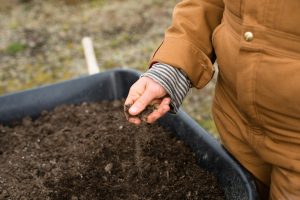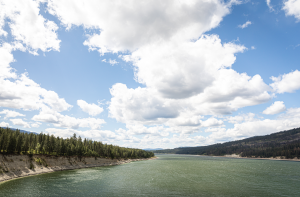The Warmest Time of the Year in Washington State
We have made it through the month of June and so now we can expect generally warmer weather in Washington state. Most everybody who has lived here longer than a year or two appreciates that this is the case, but perhaps it is not obvious why.
Read moreAre Springs Becoming Rainier in Washington State?
It has been a wet spring in Washington state. The second half of May 2017 has actually been dry but that does not really make up for the drenching from March through mid-May.
Read moreSpringtime Soil Temperatures in Washington State
One need not be a regular reader of this newsletter to appreciate how cool and wet it has been in WA during the past winter and early spring of 2017 (but hopefully it does not hurt).
Read moreA Review of Winter 2016-2017
Many residents of Washington state are probably looking forward to some warmer and drier weather after this past winter. In a nutshell, it was cold and wet. It may have seemed especially chilly because our past few winters have been warmer than normal.
Read moreSpringtime Floods in Eastern WA
Winter is winding down in the Pacific Northwest, which means that floods are becoming less and less likely on many of our streams. In particular, rivers draining watersheds at mostly lower elevations, especially on the west side of the state, tend to experience their greatest streamflows from fall into the middle of winter in association with heavy rains.
Read moreSkill of Seasonal Weather Forecasts from NOAA’s Climate Prediction Center
The last section of our newsletter features reproductions of monthly and seasonal weather forecasts for WA from NOAA’s Climate Prediction Center (CPC). How good actually are these forecasts?
We analyzed an archive of past CPC temperature and precipitation seasonal forecasts, and corresponding observations, for the years of 1995-2015 in Washington State.
Climate Change and Our Natural Resources: A Report from the Treaty Tribes in Western Washington
A group of twenty member tribes of the Northwest Indian Fisheries Commission (NWIFC) recently released a report detailing how climate change is apt to impact the ocean, freshwater and terrestrial systems of western Washington.
Read moreTrends in Lowland Snow in Washington State
Most readers of this newsletter are probably aware of the warming of winter temperatures in Washington state. In specific terms, from near the end of World War II to the present, average winter (November through February) temperatures have increased by about 2 degrees F.
Read moreWinter Air Pollution in Washington State
Here we revisit a topic discussed in a previous edition of this newsletter (January 2011), and that is particulate pollution during the winter in Washington state. There is some good news, but it remains a public health hazard at times in many parts of the state.
Read moreWinter Preview: What can we expect?
Now that our nights are getting longer and that familiar fall chill is in the air, folks are beginning to wonder what to expect for the upcoming 2016-17 winter. The El Niño of winter 2015-16 has been long gone, and neutral ENSO (El Niño-Southern Oscillation) conditions took its place this past summer.
Read more
